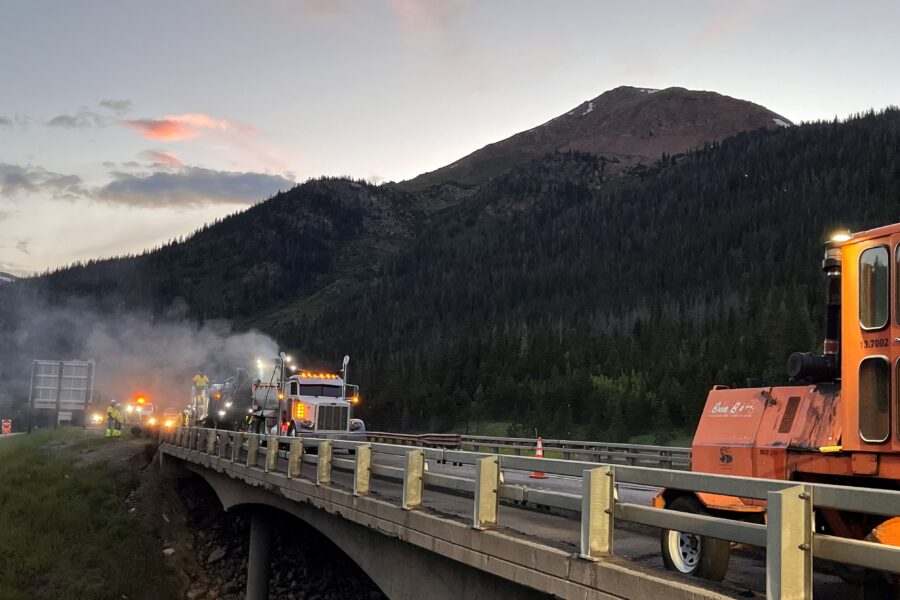Construction within FEMA Floodways and Floodplains – Things to Keep in Mind

During the planning phase of any construction project, it is imperative to verify if a project is located within an area identified as a regulated floodway or floodplain as defined by the Federal Emergency Management Agency (FEMA).
Most construction activities within a regulated floodway or floodplain require coordination with FEMA and the local Floodplain Administrator (FPA). These activities include new building construction, existing building expansion, clearing land, placing fill, grading land, mining, dredging, drilling, placement of mobile homes, and more.
Many developers are often surprised to learn that coordination with FEMA is necessary even for excavations in the floodplain or floodway. If proper coordination and permitting have not been completed, then more issues can await during construction.
Floodways vs. Floodplains
FEMA defines a Regulatory Floodway as the channel of a river or other watercourse and the adjacent land areas that must be reserved in order to discharge the base flood without cumulatively increasing the water surface elevation more than a designated height. Communities must regulate development in these floodways to ensure that there are no increases in upstream or downstream flood elevations due to construction activities.
Floodplains are recognized on the FEMA’s Flood Insurance Rate Maps (FIRMs) as Special Flood Hazard Areas (SFHAs). SFHAs are defined as the area that will be inundated by a flood event having a 1-percent chance of being equaled or exceeded in any given year. The 1-percent annual chance flood is also referred to as the base flood or 100-Year Flood.
SFHAs are labeled as Zone A, Zone AO, Zone AH, Zones A1-A30, Zone AE, Zone A99, Zone AR, Zone AR/AE, Zone AR/AO, Zone AR/A1-A30, Zone AR/A, Zone V, Zone VE, and Zones V1-V30.
Moderate flood hazard areas, labeled Zone B or Zone X (shaded) are also shown on the FIRM, and are the areas between the limits of the base flood and the 0.2-percent annual chance (or 500-year) flood. The areas of minimal flood hazard, which are the areas outside the SFHA and higher than the elevation of the 0.2 percent annual chance, are labeled Zone C or Zone X (unshaded).
How to Check Your Property
To determine if a site is located within a regulated floodway or floodplain, the site should be identified on the FEMA Flood Insurance Rate Maps (FIRM) available online. Many of these maps have been recently updated by FEMA and should be reviewed prior to any construction activities. Some sites may now be within a regulated floodplain where they previously were excluded.
If you know your property is located near a floodplain or floodway, even if it was not located in one when you purchased it, it is imperative to occasionally check the FIRM to verify your property’s status relative to the most recent map updates. If the FIRM is altered to include your property, this may influence whether you need to purchase flood insurance or your ability to sell your property in the future.
If alterations to the floodplain or floodway are to take place, affected property owners are to be notified by the persons proposing the alteration or by a community official, but many property owners do not recognize the ramifications of such a notification when it is received.
Developing on SFHAs
A Floodplain Development Permit is required prior to construction or development within any SFHA. In addition, the community will require a Letter of Map Revision (LOMR) from FEMA to change the FIRM for the community.
Certain sections of the LOMR permit are completed by the applicant and others are to be completed by the local FPA, who must sign-off on the LOMR Permit application prior to submittal to FEMA.
The FPA must also certify that all proper coordination with relevant regulatory agencies has taken place. This includes a review of possible impacts to threatened or endangered species or special habitats by the U.S. Fish and Wildlife Service and impacts to Waters of the U.S., including wetlands, by the U.S. Army Corps of Engineers.
Prior to the FPA signing of the Permit application, the FPA will review the application for completion and request additional information as needed. Also, the applicant must receive a Compliance Certificate from the FPA before construction or development can commence. This can be a lengthy process, and deficiencies in the permit application can substantially alter timelines and budgets for construction projects. It is important to coordinate with your local FPA early in the process to avoid any unnecessary setbacks.
The Cost of Getting it Wrong
Failure to conduct the proper permitting within areas identified as SFHAs can incur serious penalties.
Among these penalties include the exclusion of a community from the National Flood Insurance Program (NFIP). This can have dramatic effects across the entire community as businesses and homes would be excluded from the many protections and assistance provided by the NFIP. Additional repercussions may come from the state’s water regulatory agencies (e.g. the Texas Water Development Board).
The NFIP aims to reduce the impact of flooding on private and public structures by providing affordable insurance to property owners, renters and businesses by encouraging communities to adopt and enforce floodplain management regulations.
The participation of communities with this process is vital to maintain adequate stormwater conveyance and protect upstream, downstream, and adjacent properties from potential flooding and erosion issues caused by construction activities. The actions taken on a location have a ripple effect, which are often magnified within floodways and floodplains.
Many things change, but water still finds the path of least resistance on its race downhill. Maintaining adequate functions to the floodways and floodplains should be imperative to us as consultants, engineers, governmental officials and citizens.




